Discover if Bluetooth actually poses risks to human health, and find the answers to common safety concerns surrounding Bluetooth use.
If you’re an avid user of Bluetooth headphones, you may have heard rumors that they’re bad for your health.
This concern may even intensify when you do a quick internet search. There are websites that claim that using Bluetooth headphones can cause cancer, infertility, and brain issues.
Perhaps, you’ve already started asking yourself, “Is Bluetooth safe to use?”
Luckily, we’re here to answer your questions and alleviate your worries. In this article, we’ll discuss if Bluetooth headphones are indeed safe and debunk some myths regarding the health risks they’re said to pose. And where these worries actually came from.
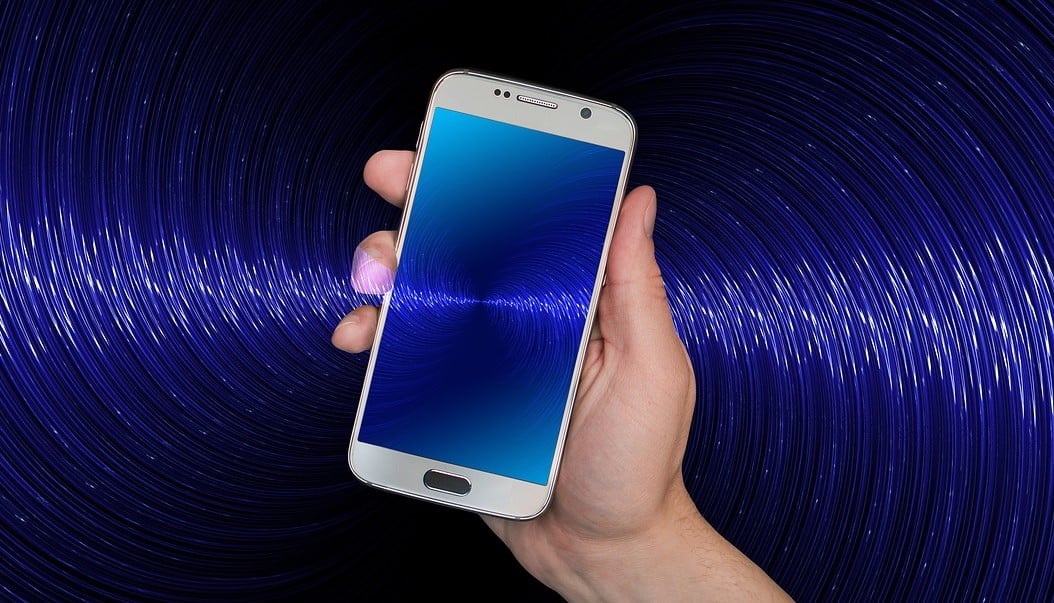
Bluetooth Radiation: What You Need to Know
Before we start, let’s first define what Bluetooth is and how it exactly works.
Bluetooth refers to a wireless communications technology. It allows devices to communicate and exchange data over a short distance.
Bluetooth waves don’t travel very far. In fact, most Bluetooth devices typically have a maximum connectivity range of only 30 feet. This distance is also reduced when walls and other obstacles are present.
Bluetooth waves typically switch frequencies to combat interference and fading. However, it operates within a frequency range of 2.402 to 2.480 gigahertz. This occurs in the same wavelength as the frequencies used by microwaves, Wi-Fi, and mobile phones.
Because Bluetooth emits energy just like phones do, it is also a source of radiation. This radiation is specifically called electromagnetic radiation (EMR).
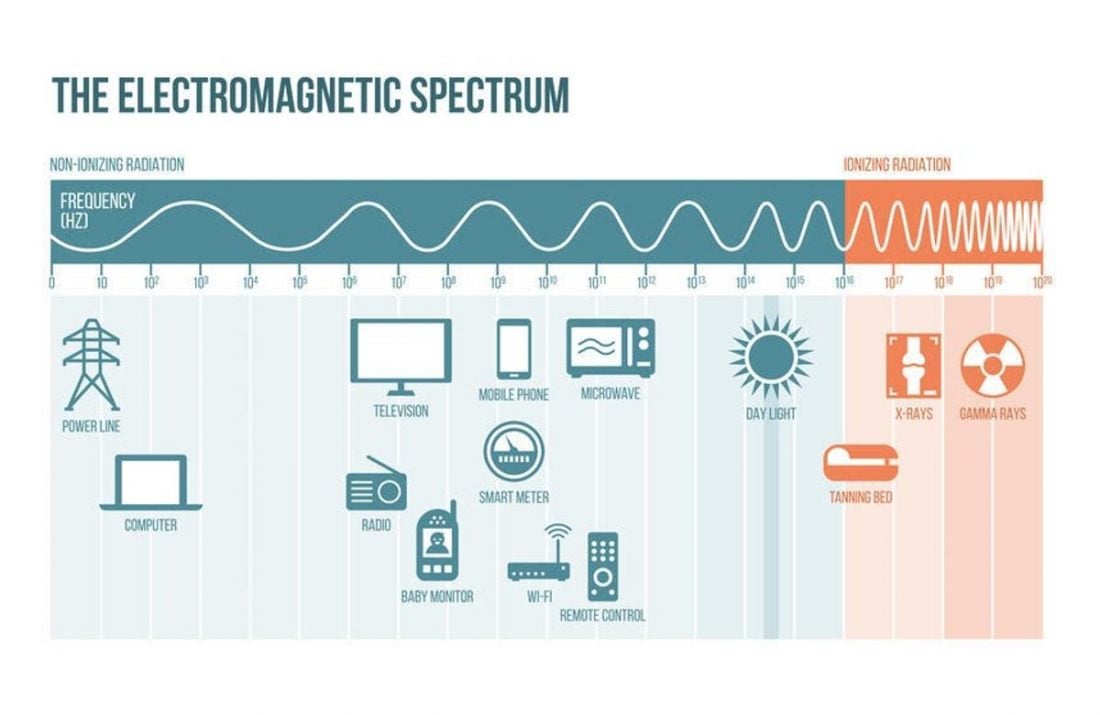
EMR is a general term that refers to waves of the electromagnetic field, which carry electromagnetic radiant energy. These include radio waves, microwaves, infrared, visible light, ultraviolet light, X-rays, and gamma rays.
EMR can be classified as ionizing EMR or non-ionizing EMR, depending on the strength of the emitted radiation. Here’s how to differentiate between the two:
Ionizing EMR
‘Ionizing EMR’ refers to high-energy radiation which have shorter wavelengths and higher frequency waves. These can be found at the far-right of the electromagnetic spectrum, which includes X rays and gamma rays.
These are characterized by their ability to dislodge electrons in the orbit of an atom due to their high energy.
By changing an atom’s charge, ionizing EMR can change the atomic structure of certain objects or substances entirely. For instance, high levels of ionizing EMR passing through the body can alter our cell structure well enough to eventually cause cancer.
Non-Ionizing EMR
These are radiation with longer wavelengths and lower frequencies, normally found at the left side of the spectrum. Unlike ionizing EMR, non-ionizing EMR do not have enough energy to ionize an atom and change its charge.
However, non-ionizing EMR can still heat substances—for instance, microwave ovens use microwaves, a non-ionizing EMR, to heat food.
Distinguishing ionizing from non-ionizing EMR is essential in determining their potential to harm the body.
Ionizing EMR, especially in high amounts, can alter the chemical bonds forming human tissue, which can be fatal to human health. It can also cause immediate damage, including burns and organ damage. However, non-ionizing EMR can simply pass through the body without causing harm.
So, Is Bluetooth Safe?
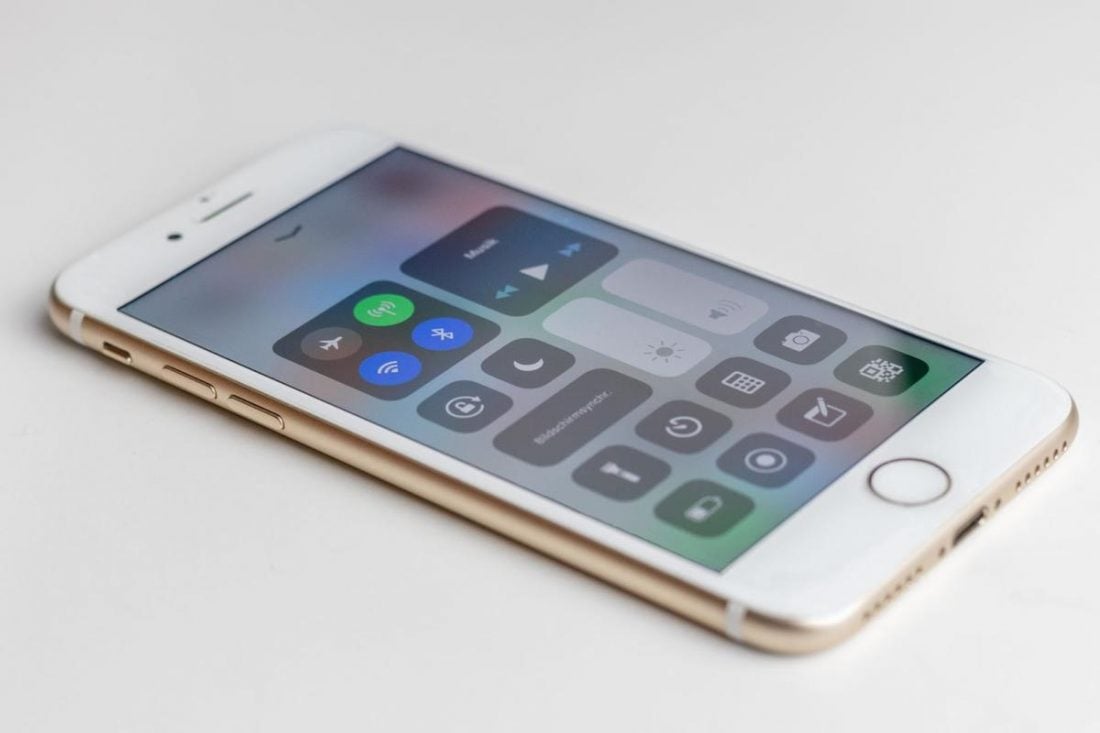
Since it’s a kind of non-ionizing EMR, Bluetooth is generally safe for humans, and will not affect our health.
In fact, Bluetooth has relatively low specific absorption rate (SAR) levels, further proving that it’s not dangerous to humans.
In the United States, the Federal Communication Commission (FCC) requires a SAR level of 1.6 watts per kilogram (W/kg) or lower for phones. In the European Union, meanwhile, phones and handheld devices have a SAR limit of 2 W/kg.
These are levels deemed safe for humans. However, with Bluetooth devices, SAR levels can be much lower.
In fact, Bluetooth devices have a power density 10 to 400 times lower than those of mobile phones.
For instance, Apple Airpods have a SAR value of only 0.072 W/kg for the head, and 0.603 W/kg for the body. This is considering Airpods have a Class 1 transmission power — a relatively high SAR value compared to other Bluetooth devices. Most Bluetooth headphones are in Class 2 or 3, which have even lower SAR values.
These SAR levels indicate that radiation from Bluetooth devices is safe for humans. In fact, they don’t even come close to the minimum values that may affect human health.
However, since Bluetooth devices still emit radiation, other people are still wary about it. After all, most people link radiation to health concerns and problems. Because of this, people still question the safety of Bluetooth devices.
Common Safety Concerns Involving Bluetooth Headphones
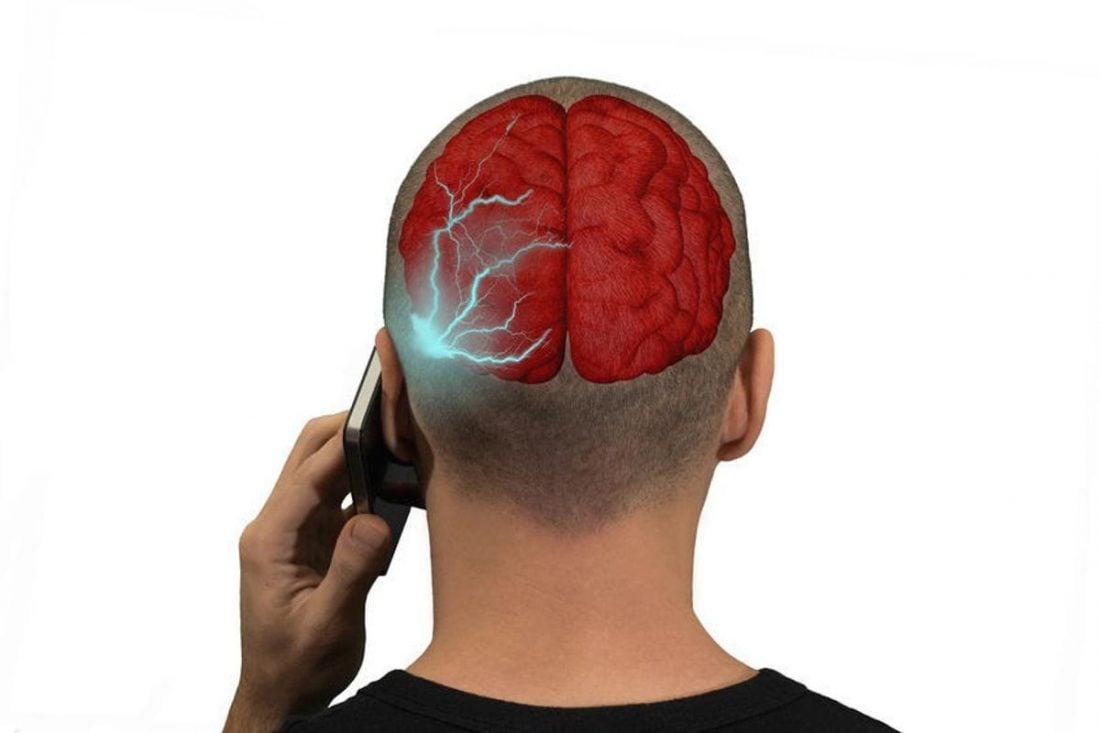
Currently, some websites still claim that Bluetooth can be dangerous and lead to disastrous consequences to human health.
However, these claims may not be entirely true. Thus, we’ll be tackling some common myths and concerns on Bluetooth radiation and its effects on the human body.
Can Bluetooth cause cancer?
This concern started when a 2015 study suggested that mobile phone users have a “somewhat increased risk” for meningioma, a kind of brain tumor. This prompted similar concerns regarding the safety of other non-ionizing EMR emitting devices like Bluetooth.
But, we must point out that this study only suggested an increased risk for brain tumors. It didn’t exactly claim that mobile phones can directly cause cancer.
Since then, multiple studies have tried to replicate the study’s results, but found no conclusive evidence to support this claim. Until now, no evidence exists that mobile phone usage causes or increases the risk of cancer. The link between the two is weak at best.
In fact, non-ionizing EMR devices, in general, seem not to have any associated effect on cancer risk. One study concluded that even with children, there is no significant difference between the risks of contracting childhood cancer for children both exposed and unexposed to non-ionizing EMR.
Lastly, it’s important to note that Bluetooth devices have significantly less SAR compared to cell phones. According to Dr. Matthew MacDougall, Head Neurosurgeon at Neuralink, “the power levels are tiny in these devices” and “way out of the realm of ionizing radiation that people would worry about tumor-causing EMF fields.”
Hence, the purported risk of cancer from mobile phones can’t be linked to Bluetooth devices. As such, it makes sense to assume that they would even be less harmful than mobile phones.
Can wireless headphones make me sterile?
Concerns on the safety of wireless headphones sprung because of studies linking cell phone use to male infertility.
A study in 2009 in the journal Fertility and Sterility mentioned that using mobile phones near your testicles (e.g., in the pockets or clipped to the belt) can expose the testes to damaging RF waves, which can affect sperm quality.
Later studies have found significant changes to sperm parameters (e.g., sperm count, morphology, and motility) associated with extended mobile phone use. This is presumed to be caused by increased oxidative stress, due to EMR emitted by mobile phones.
However, these findings have not yet been generalized to weaker non-ionizing EMR, such as Bluetooth.
Additionally, oxidative stress in sperm is influenced by factors such as proximity of the device to the testes, as well as increased duration of use of mobile phones. But, these don’t apply to Bluetooth devices, which are normally used far from the lower half of the body.
All these said, the link of using Bluetooth devices to the risk of male sterility still hasn’t been established. Hence, we can’t conclude that it can make you sterile.
Will being surrounded by Bluetooth ‘cook my brain’?
If you’re curious if using Bluetooth headphones for a long period of time can produce enough heat to “cook” your brain, the answer is no.
Even if radiation from your Bluetooth headphones reaches your brain, Bluetooth devices have a low power output. That means they can’t produce enough heat to do any lasting damage to your brain even after hours of use.
Unlike microwaves, Bluetooth headphones don’t use around 850 to 1800 W to function. Instead, Bluetooth headphones normally emit a maximum of only 100 mW—that’s 8,500 to 18,000 times less than the power output of microwaves.
It’s this power discrepancy that allows microwaves to cook food, and keeps your head safe as you use Bluetooth headphones.
Moreover, no evidence suggests that Bluetooth devices can do lasting damage to the brain.
Despite being worn in the ear, Bluetooth devices don’t induce any significant change in cochlear nerve activity. Despite their close proximity to the brain, the associated risk of Bluetooth headphones to cancer and other brain ailments remains unbacked by evidence.
Therefore, we can safely say that Bluetooth headphones definitely won’t cook your brain.
Where Did the Concern Come From?
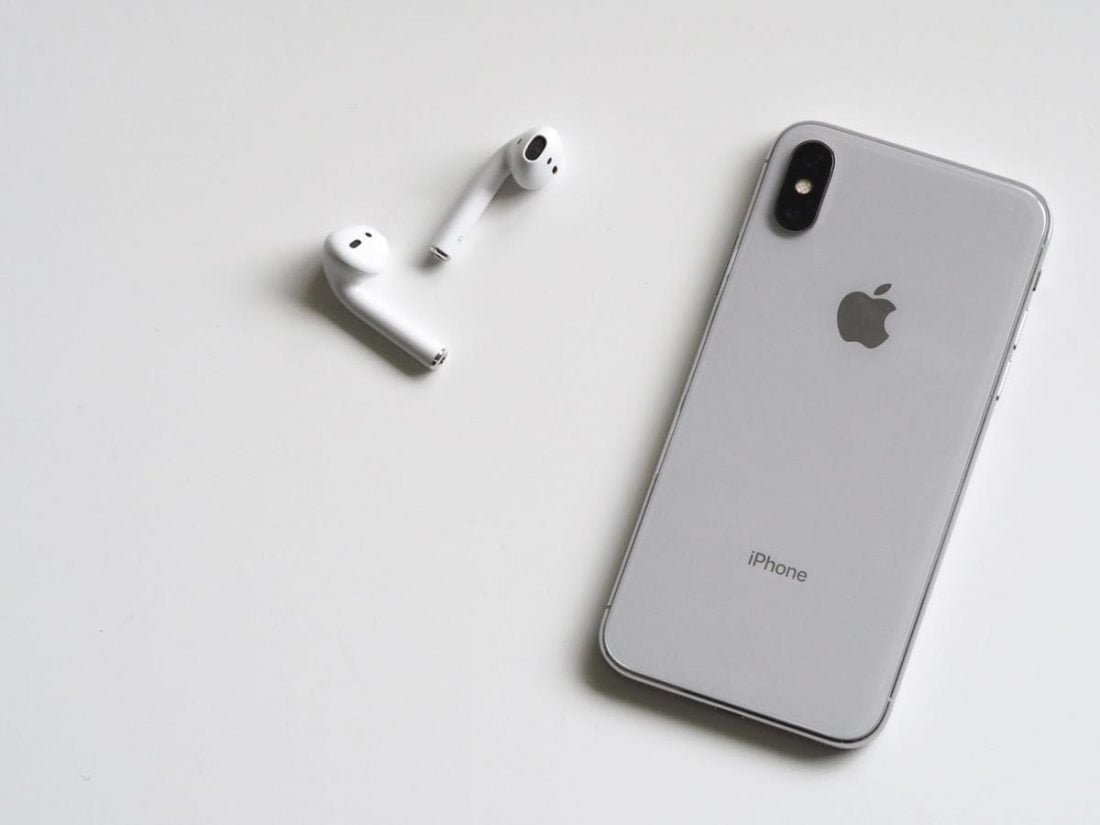
So, if Bluetooth devices are relatively safe, why are there still doubts concerning its safety?
This issue can be traced back to 2015, when multiple studies suggested that long-term exposure to radiation emitted by cellphones is linked to a number of health concerns. This prompted a group of more than 200 scientists to appeal to the World Health Organization (WHO) and United Nations (UN), lobbying for stricter international regulations surrounding the use of EMR, given their potentially damaging effects on human health.
It’s important to note that this appeal did not explicitly state Bluetooth devices as dangerous.
After the release of the Apple Airpods in 2019, this controversy was reignited. An article used the 2015 UN/WHO appeal to back their claims on the dangers of Bluetooth use, even though the 2015 appeal did not include Bluetooth devices on their list.
As a result of this misquote, people became more skeptical about the safety of Bluetooth headphones. This is despite their relatively low EMR output compared to cell phones.
Taking Precautions When Using Bluetooth Headphones

If you’re still wary about Bluetooth, remember that we’re constantly exposed to EMR in our daily lives, regardless.
That said, Bluetooth devices are safe to use on their own. However, using them in close proximity to other EMR-emitting devices for extended periods may lead to problems. This is in light of new concerns regarding the safety of other EMR-emitting devices, such as microwaves and cell towers powered by 5G.
Exposure to multiple devices at once can increase SAR levels to more than what is safe. And since we can’t completely eliminate Bluetooth exposure from our modern lives, sufficient care must be taken.
For instance, it’s a wise idea to switch to hands-free mode or speaker phone when taking long calls. Alternatively, you may want to consider using a wired headset when taking calls.
Maintaining a considerable distance from your phone, especially when using it for a long time, is also advisable. This is particularly true when you have weak reception, as phones may increase power usage to compensate for weak signals.
In addition, children are more sensitive to radiation. Thus, it’s wise to limit their exposure to multiple EMR-emitting devices at once. For instance, avoid exposing them to a mobile phone, Bluetooth, WiFI, and microwave, all in one room.
Lastly, when choosing any device, it’s best to go with one with lower SAR ratings. You should also go for brands that have a history of complying with FCC standards for added safety.
Conclusion
As you can see, Bluetooth devices are relatively safe to use, and currently pose no health risks or concerns to anyone.
Hopefully, through this article, we’ve been able to dissipate your doubts regarding the use of Bluetooth in your day-to-day life. We also hope we’ve clarified why Bluetooth devices remain safe and reliable, despite dubious claims surrounding their use.
Now, you can finally use your Bluetooth headphones without worrying about their effects on your health!

Do Bluetooth devices emit emf’s when they’re not connected? For instance my air purifier has the ability to connect to my phone via blue tooth but I don’t use that feature. Is it still emitting the EMF’s associated with Bluetooth simply by being turned on or does it need to be paired with a device to emit them?
Hi Tanya, that would depend on the design of each device specifically, it might be that your air purifier is always in discoverable mode in which case it’s always emitting a signal, or it might go into a standby mode to conserve energy. My guess would be that it’s always on since an air purifier doesn’t rely on batteries and always has a constant source of energy the designers wouldn’t really have a reason to add said standby mode. Regardless, you don’t need to worry, the electromagnetic waves emitted by your lightbulb have higher energy than the radiofrequencies used on Bluetooth.
I will argue it depends on the type of bulb (incandescent, Bluetooth or WiFi.)
Hi Tanya,
I just came across your question. One thing you need to consider is electromagnetic waves reduce exponentially with distance. Unlike a cell phone or Bluetooth headphones I’m pretty sure you are not putting your ionizer up to your head, or otherwise close to your body. That being said regardless of whether your ionizer is emitting EMF’s via Bluetooth you should be safe knowing the unit is pretty far from your body, thus any radiation reaching you from the device will be very very small if at all due to your proximity to it.
Hello
I would argue that multiple devices emitting non ionising radiation have the same risk as only one device.
Power from different devices doesn’t add together.
Having 10x100W light bulbs, won’t give you 1x1000W bulb intensity light.
This example is theoretical of course, because no device has 100% efficiency.
My point is; quantity of radiation is not harmful, the power and frequency is.
Thank you.
You sound like a scie twist beyond me sir. I am interested in the su ject as I’ve two sons who both have depression and they where these costantly to counteract symptoms of their asperbergers. Do you suggest anyinits in using these devices and know of any studies to back it up. I’m guessing from what I’ve read that you probly don’t see BT headphones as a cause of much. I myself blame covid, life events and genes more but am still interesred in your opinion.
If you don’t mind how saying briefly how you came to your above comment I’d really appreciate knowing. Looking for trustable scientific 8nfo if there’s any to have. Hoping you can help. Thanks in advance.
Thanks for the article, however, I find the argument of ionizing vs non-ionizing to be the greatest magic trick, that of misdirection pulled in front of our eyes.
Any type of microwave radiation (bluetooth, wifi, etc.) interacts with water molecules. This interaction excites and vibrates back and forth (flipping poles) at approximately the frequency of the microwaves, that are interacting with them. Said in a simpler way, the microwaves are hitting the water so quickly at rates of many of millions to billions a times a second causing them to switch poles that such an interaction creates friction which in turn produces heat.
Granted, the effects of Microwaves are greatly effected by the energy rating, but, make no mistake about it, the more you are in these type of fields, potential hydrogen (ph) is effected. Lowering the PH..
“Disease cannot survive in an alkaline state; however, in a low oxygen/low pH (acidic) state, viruses, bacteria, yeast, mold, fungus, Candida and Cancer cells all thrive.”
We know of many other frequencies and or fields that are more harmoniums than those of microwaves and yet the technology has been built and pushed around microwaves. It might be worth pondering the question, why?
Regardless, the key is moderation.
Thank you
I’ve been skeptical for a long time myself. Yet the evidence suggests otherwise that it’s not harmful. I still wouldn’t want to overdose on BT though.
Are you suggesting that it’s not the damage to the cell’s reproductive capability or electrons, but the lowering of PH which causes the increase in cancer?
Also that’s a good question, why has technology been build around microwaves? I don’t know the answer but maybe it’s because of the energy those waves carry due to frequency?
Hey I haven’t read this article.
I just wanted to see if someone else is experiencing the same as me.
It just happens to me with any bluetooth device, not only with headphones. For example, when I pair a game controller to my cellphone via bluetooth. I start feeling like I’ve been draining my energy, little dizzy, some itchy sensation in random points of my body, nervousness, etc.
Most recently it has happened to me with the newest phones I’ve tried, as my old one needed an upgrade. I’ve seen that these symptoms are intensified in the city I currently live in: Calgary, which is very dry. But still happened in my home city which is more humid. Maybe less, but still happened. In fact, the first time in my life when I experience this with bluetooth devices was there many year ago.
I may have a very sensitive body/nervous system/whatever it is and that’s why I probably experience this, but I’m sure I’m not the only one. This tells me, in the end, that these technologies are harmful anyways at some level, otherwise nobody would experience anything bad.
Just bought some bluetooth earbuds the other day and I am sending them back because they are giving me a pulsing headache in the EXACT spot where the bluetooth is connecting. It wasn’t a a normal headche but felt ‘electric’ for lack of a better term.
I bought a PS5 earlier this year and I had to sell it because it gave me even worse headaches so I could not stand to play it. Very little issues with the Series X for some reason.
This stuff is definitely bad for us even if we don’t feel it,
Found this some where, is it true?(Please, don’t use *Bluetooth ear phone devices* near *Hgh Tension Electric Cables* and installations such as *Railway Platforms-SGR* . Electric current from the cables may connect with the net-activated earphone directly hitting the *🧠 Brain* which may result to *death*. May the Almighty God protect us always,share with Loved ones)
There are large electromagnetic fields that radiate from power lines and trains. I don’t think any coupling will cause death. A fun experiment is to take a fluorescent bulb in your hand near the area you are concerned about. If there truly are large fields in the area the bulb will actually light up ( not kidding).
We won’t have a suitable answer to this question for many decades…if and when large numbers of phone receptionists, drive-thru workers, pilots, radio/tv station operators, and others working jobs that require the use of wireless headsets for several hours a day develop some kind of neurological disease at a higher frequency than those that don’t work those kinds of jobs.
Why risk it?